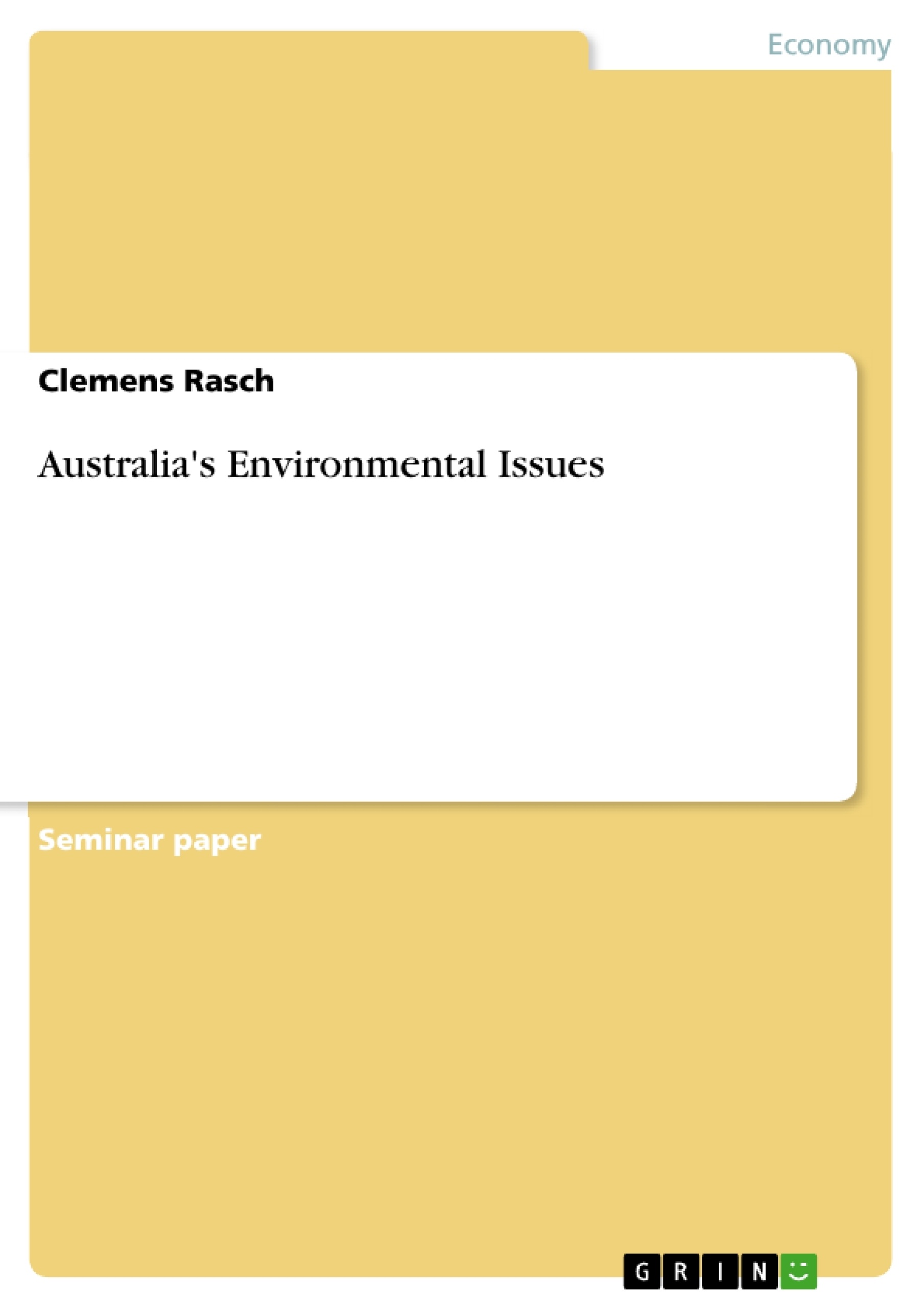Excerpt
Australia’s Environmental Issues
Numerous environmental issue and problems have been discussed relative to Australia, over the past few years. The subsequent sections discuss the main problems which have transpired are discussed subsequently.
Deforestation
It is estimated approximately 7% of Western Australia’s agricultural area is suffering from problems as a result of deforestation (WWF, 2009). As well as destroying the natural habitats of animals, deforestation has an adverse effect of soil salinity and degradation, similar to those caused by Land Clearing (Rasiaha et al, 2003) (discussed in the subsequent section).
The Commonwealth Scientific and Industrial Research Organization (CSIRO) estimates that land dilapidation resulting from deforestation has an economic cost of approximately $1billion annually (WWF, 2009), predominantly from making such land areas unusable as well as the knock on outcome of negatively effecting water quality.
Land Clearing
Land Clearing has almost primarily occurred in Australia for agricultural purposes (GCGR, 2007); this can differentiated somewhat from deforestation since it largely encompasses the removal of vegetation, whereas deforestation evidentially is more concerned with the removal and excavation of trees. The clearing of land has significantly increased, since this has been determined not only to increase the value of the land, but also make it useful; this is almost entirely resultant from increasing the agricultural capacity and consequently revenue generation, that Land Clearing brings with it (Rasiaha et al, 2003). The environmental effects of land clearing, however, are almost entirely negative; land clearing in Australia has been attributed to having an adverse effect on limiting the effects of greenhouse emissions; vegetation is known to have an absorptive ability with regards to carbon dioxide (Rasiaha et al, 2003). More significantly Land Clearing has affected local ecosystems with the country, resulting in a number of knock on effects; the clearing of vegetation has affected the food sources of numerous species, resulting on a number becoming extinct. Furthermore, by exposing land to the effects of the weather has lead to land degradation, in areas where agriculture use has not been immediately implement following excavation, which has meant the re-agricultural generation has become near impossible (Rasiaha et al, 2003).
Climate Change/Pollution
The Australian government itself has acknowledged that it is certain activities within the country which have contributed to global warming and thus climate change, in particular damaging gas emissions; currently, Australia has the highest per capita greenhouse gas emissions, of all the world’s nations (GCGR, 2007).
Due to climate change and global warming, the country has experienced numerous problems; these have in particular had a strong affect on the water sources and the supply of water in Australia (GCGR, 2007). Though rainfall has increased across Australia over the past three decades, the south east region of the country has frequently seen shortages and availability in the reserves of water (Soh et al, 2008). This is so much so the case, that water usage restrictions are in force within certain areas. Whilst the rising population in such urban areas have been attributed as a partial rationale explaining this, it is the problems of the global warming within the country which are seen as the long term threat to addressing climate sustainability and control (Soh et al, 2008).
An accredited report into the effects of global warming suggested that a rise in sea level resultant from this phenomenon over the next 30 years, could result in damage in excess of $150billion to the Australian economy(WWF, 2009); evidentially Australia would be a significant contributor to this given its current excessive output of greenhouse gas emissions.
Marine Pollution
As mentioned previously, Australia has the highest per capita greenhouse gas emissions, across all the world’s nations. However, Australia’s pollution problems have not been limited to this. Agricultural operations have had a knock on effect on coastal regions resulting from discharges into rivers; approximately 19000 tonnes of phosphorus and 141000 tonnes of nitrogen are discharged annually into rivers within Australia (WWF, 2009).
Furthermore, there have been numerous oil spills in the which have brought to light that such occurrences remain a danger to Australia’s long-term environmental health; earlier, in 2009 the occurrence of the ‘South east Queensland Oil Spill’ resulted in excess of 200000 liters of toxins were spilled on Brisbane’s beaches, the worst spillage ever experienced by the city (WWF, 2009).
[...]
- Quote paper
- Clemens Rasch (Author), 2009, Australia's Environmental Issues, Munich, GRIN Verlag, https://www.grin.com/document/157616
Publish now - it's free






















Comments